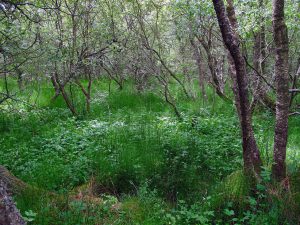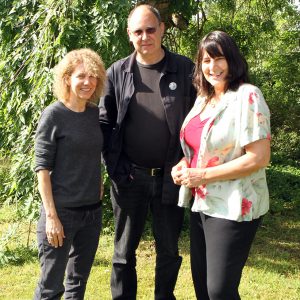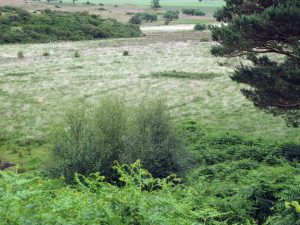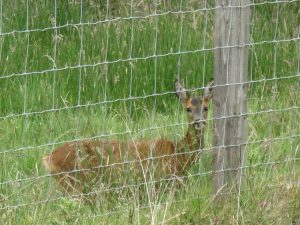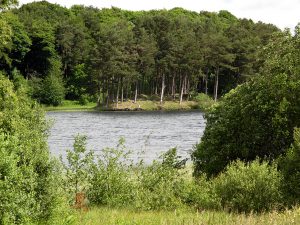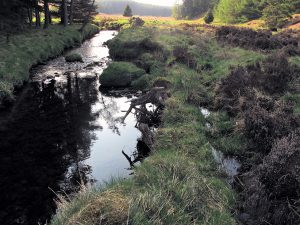Introduction
Cinderella River, the Evolving Narrative of the River Lee (2017) is, taken literally, a case study undertaken by Simon Read as part of Hydrocitizenship, a three-year national research project funded by the UK’s Arts and Humanities Research Council. It is, however, also directly informed by Read’s work as an artist, speculative cartographer, environmental activist and Associate Professor in Fine Art at Middlesex University.
Cinderella River
Cinderella River is primarily derived from a series of scrupulously documented walks along the Lee, undertaken by Read with students, colleagues or alone. Like any good case study, the book is scrupulously researched, offers astute observations, and provides informed suggestions for practical implementation. The rich and varied material it articulates flows from Read’s informed attention to issues as diverse as water governance, the placement of art in public spaces, limitations inherent in the planning of green spaces and open space amenities, the needs of the local wild life, and so on. A valuable and detailed case study then, albeit one written from a first-person perspective informed by certain wry humour, an unusual breadth of understanding, and enriched by numerous, carefully chosen, images. My concern here, however, ultimately has less to do with the book as a case study than with it being the physical trace of an exemplary engagement, to the point of being a form of deep mapping, with and of the River Lee. In short, I am interested in it as a significant example of ‘the art of both/and’, an inclusive art that helps address: “a deficiency in the mainstream art-based philosophical aesthetics by being truthful to the diverse dimensions [italics mine] of our aesthetic life”, a life lived in a pluriverse in which experience of the aesthetic “is not confined to the artworld and other art-like objects and activities”.[1]
The notion of an art of both/and is predicated on a conversational, relational, and inclusive understanding of the aesthetic, one that recognizes the implications of our living in a pluriverse and set over against the dominant presuppositions of our culture. (Presuppositions predicated on the assumption of a monolithic universe; the same assumptions on which our current university educational system and its research culture is based). Consequently, the art of both/and could be said to be a response to our need to abandon our culture’s reductive naturalism, it’s “faith in a single natural world, comprehensible through Science—or rather, through a mistaken definition of (Western) natural science whose purpose has been to eliminate entities from the pluriverse’.[2] A need that reflects the growing sense of crisis in our psychic, social and environmental concerns.
Locating Cinderella River as an example of the art of both/and.
I see Cinderella River as the outcome of different energies moving back and forth across three distinct but semi-permeable ‘worlds’ located in productive tension with each other. These are Read’s own diverse set of creative practices, his long-standing educational engagement as a tutor and lecturer (which he regards as “a duty as much as a congenial way of earning a living”), and the all-too-often Byzantine complexity of the world of State-funded academic research. (In this case, the hydrocitizenship project referred to above).
I’ll touch briefly on each of these ‘worlds’ in turn.
As the Portfolio page of Read’s web site makes clear, his creative work encompasses a diverse range of activities loosely-related practices. These include large-scale art work such as his Thames Profile, commissioned by the Countryside Commission; conference papers and talks relating to his practice and related concerns; a broad range of drawing work; both cartographic and sculptural environmental interventions; and the photographic work produced using hand-made panoramic cameras for which he was originally best known. Much of this diverse set of practices has, however, been directly or indirectly informed by the fact that his home base and studio have, since 1980, been a seagoing barge that has given him intimate access to the East Anglian Coast and its concerns.
Simon Read’s active concern with art education is, in my view, central to the perceptiveness, tolerance, and critical solicitude that permeates the text of Cinderella River. These qualities relate to a rarely discussed and poorly understood distinction between what might be called ‘monolithic’ and ‘pluralist’ conceptions of the artist. The term artist is usually (and misleadingly) taken to refer to somebody whose art practice is their sole or primary source of income and so their exclusive concern. To survive, such a person must negotiate and compete in the fickle, unregulated, and highly competitive ‘art world’ dominated by a global market predicated on conspicuous consumption. Those who wish to engage successfully with this market-driven world must adopt a single-mindedly and aggressively partisan position vis-à-vis their own work and, consequently, engage in continual and often strident self-promotion. The artist (who is also an) educator must, by contrast, constantly negotiate a paradox. She or he must square the circle of maintaining the necessary degree of partisanship to sustain their own practice with the disinterested openness necessary to meet the diverse educational needs of their students. Something of how Read himself squares this circle is hinted at in a section within the book called Walking the Walk. This includes reflections on Read’s introducing fourteen first-year art students at Middlesex University to the sculpture trail known as The Line, which roughly follows the Greenwich Meridian between the Olympic Park and the O2 stadium.
It is difficult to provide any kind of brief introduction to the world of academic research to which the hydrocitizenship project (funded to the tune of over one million pounds) belongs. This is due to the Byzantine complexities and opacity of the academic research world, but also to my own involvement in the hydrocitizenship project itself. (For my views on the early stages on this project, see my posts on 06.03.2016, 18.07.2015, and 11.02.2015). Consequently, I will restrict myself to making one general point here.
This concerns the realpolitik of disciplinarity which still underwrites almost all academic research projects. The Research Councils have, for some time now, encouraged the inclusion of the arts in inter-disciplinary academic research projects, arguably to increase the impact of their outcomes. While there are legitimate arguments for seeing the inclusion of arts elements as extending the reach and effectiveness of discipline-based research, these represent a somewhat partial view.
Arts practitioners have long complained that their inclusion in research projects is often either cosmetic, a means of ‘sexing up’ or rendering more accessible the data provided by ‘real’ research, or as a tacit form of academic ‘neo-colonialism’. That is, as a way of co-opting the aura of the arts, but without addressing the fundamental ontological and epistemological issues that should be raised when they are included in research projects. This leads to the suspicion that the academy is merely using the arts to paper over the cracks in a logocentric system increasingly unable to adequately address the ‘wicked problems’ at the heart of our most pressing psychic, social, and environmental difficulties. In my view both views outlined above contain a degree of truth.
I’m concerned here to think about Cinderella River in the context of this ambiguity, and to point up the book’s significance in relation to the type of research project that occasioned and funded it.
The ‘art’ of both/and.
“We are always both more and less than the categories that name and divide us”.
Geraldine Finn[3]
In this section I want to offer a brief justification for referring to Read’s book as an exemplary engagement, to the point of being a form of deep mapping, with and of the River Lee. (A claim which, I suspect, will not concern him one way or the other). For reasons already hinted at, this justification is likely to appear indefensible to most artists because it runs counter to the cultural presupposition that art only appears as such in its own exclusive aesthetic space, one entirely ‘other’ to that occupied by such instrumental activities as the production of a case study. While practitioners of the art of deep mapping are likely, almost by definition, to be more inclined to adopt more inclusive notions of what constitutes ‘art’, they too may view my claim as over-extending the notion of what might reasonably constitute a deep mapping.
Put briefly, the justification for my claim is as follows.
In his Preface: Deep Mapping and Spatial Anthropology for the online, open access Journal Humanities,[4] Les Roberts refers to a statement by Jane Bailey and myself in which we describe the process of deep mapping as consisting of: “observing, listening, walking, conversing, writing and exchanging . . . of selecting, reflecting, naming, and generating . . . [and] of digitizing, interweaving, offering and inviting.”[5] He adds that although this “will not apply to all variations and permutations of deep mapping practice”, it usefully signposts “the way that very little of what deep mappers are doing is in fact oriented towards the production of maps”. Rather, he suggests, they immerse themselves:
“in the warp and weft of a lived and fundamentally intersubjective spatiality. It is from that performative platform—that space—that the creative coalescence of structures, forms, affects, energies, narratives, connections, memories, imaginaries, mythologies, voices, identities, temporalities, images, and textualities starts to provisionally take shape”.[6]
In my view, Reed’s book precisely articulates just such a warp and weft of lived and fundamentally intersubjective spatiality. Roberts goes on to add that whether what emerges from the process of articulating that space is a “map” is less important than the process involved; “an embodied and reflexive immersion in a life that is lived and performed spatially. A cartography of depth. A diving within”.[7] On this basis, I feel wholly justified in claiming that Read’s Cinderella River is both a case study and, additionally, the outcome of pursuing the fundamental qualities ascribed to a deep mapping by Bailey and myself, as taken up by Roberts.
This argument pre-supposes a view of the art of deep mapping in which collective relationality, rather than a traditional artistic exclusivity, is taken as central. One in which “listening”,[8] understood as a form of notitia,[9] is the founding principal. Notitia is understood here inclusively, as the exercise of an imaginative facility common to the creative articulation of insight central to the practices of art, education, ethics, and conversation, properly understood.[10] As “a careful attention that is sustained, patient, subtly attuned to images and metaphor”, it is able “to track both hidden meanings and surface presentations”.[11] Neither a technique nor a methodology, notitia constitutes an informed “seeing through” that is “never accomplished once and for all” and which is, of necessity, “slow, observant, and participatory”.[12] In the educational and research contexts relevant here, the practice of notitia is best seen as “an attempt to recover the neglected and perhaps deeper roots of what we call thinking”.[13] This attempt is necessitated by our being “inhabitants of a culture hierarchized by a logos that knows how to speak but not to listen”; the hierarchization designed to restrict our acting between and across the “competing monologues”[14] that make up the academic culture of disciplinarity.
In the context of reflecting on Cinderella River, notitia is understood as related to parrhesia, a classical term revisited by Michel Foucault and often paraphrased as ‘free or fearless speech’. This mode of speaking is intended to: “unearth alternatives to the dominant, post-Cartesian approach to truth as disembodied and objective”,[15] an approach that still dominates the presuppositions on which disciplinary realpolitik is predicated. Zitzewitz characterizes this alternative approach in terms of: “a variety of practices in which truth is dependent upon the ethical disposition of the speaker” [emphasis mine].[16] In this respect, parrhesia sits in direct contrast to notions of professional and academic authority predicated on the rhetorical use of an exclusive discourse that draws heavily on ‘power words’ that derive their authority from the taken-as-given intellectual or cultural positions of an academic status quo. “Parrhestastic speech” is, then, “characterized by the frank and unornamented declaration of … what is in the speaker’s mind”[17]; the product of a person whose spoken or otherwise articulated truth: “is subjective, verifiable not through recourse to claims of expertise” [whether that expertise is conventionally ‘academic’ or ‘artistic’], “but rather through the ethical labour … of the speaker”[18] (ibid). (A point that reinforces the inclusive understanding of notitia as common to both art and ethics). Zitzewitz adds: “The audience accepts these truths because of their relationship of trust with the speaker, a trust that is maintained through the speaker’s exposure to risk”,[19] for example, the risk inherent in setting aside any recourse to claims of a special or elevated position predicated on taken-for-granted professional expertise.
My own thinking in respect to the above draws on Guattari’s conception of the ethico-aesthetic as this relates to parrhesia. That is, in terms of a thinking that derives in part from Foucault’s desire, in the discussion of art, to move its practice “away from an exclusively discursive situation” by placing “parrahesia within the realm of sensible experience”.[20] In terms of Simon Read’s work, that sensible experience is used both ‘artfully’ and to construct a practical case study. That is, it’s located within an inclusive realm of imagining, drawing together, conversing, story-telling, all framed by extensive walking and other bodily practices oriented by the River Lee. An inclusive realm that, in its paradoxical marriage of specificity and diversity, responds to Geraldine Finn’s observation above, that “we are always both more and less than the categories that name and divide us” and, in doing so, is also: “truthful to the diverse dimensions of our aesthetic life”, producing a book that is both a work of art predicated on the expanded aesthetic of notitia and a case study responding to forms of everyday aesthetic experiences that are: “not confined to the artworld and other art-like objects and activities”.[21]
[1] Yuriko Saito (2007) Everyday Aesthetics Oxford: Oxford University Press p. 242
[2] Bruno Latour (2004) Whose Cosmos, Whose Cosmopolitics http://www.bruno-latour.fr/sites/default/files/92-BECK_GB.pdf p. 458.
[3] Geraldine Finn (1996) Why Althusser Killed His Wife: Essays on Discourse and Violence Atlantic Highlands: Humanities Press International p. 156.
[4] The Deep Mapping double issue of Humanities (ISSN 2076-0787) from 2015–2016, is available online at: http://www.mdpi.com/journal/humanities/special_issues/DeepMapping)
[5] Jane Bailey and Iain Biggs “‘Either Side of Delphy Bridge’: A Deep Mapping Project Evoking and Engaging the Lives of Older Adults in Rural North Cornwall.” Journal of Rural Studies 28 (2012): 318–28, p. 326.
[6] Les Roberts ‘Preface: Deep Mapping and Spatial Anthropology’ reprinted from: Humanities 2016, 5(1), 5 http://www.mdpi.com/2076-0787/5/1/5 p. xiv.
[7] Ibid.
[8] See Gemma Corradi Fiumara (1990) The Other Side of Language: a philosophy of listening trans Lambert, C London & New York, Routledge.
[9] Mary Watkins (2008) ‘”Breaking the Vessels”: Archetypal Psychology and the Restoration of Culture, Community and Ecology’ Marlan, S (ed) Archetypal Psychologies: Reflections in Honor of James Hillman New Orleans, Louisiana, Spring Journal Books pp. 415-43.
[10] See Monica Szewczyk (2009) The Art of Conversation, Part One e-flux Journal no. 3 Feb. 2009: ‘…if, as an art, conversation is the creation of worlds, we could say that to choose to have a conversation with someone is to admit them into the field where worlds are constructed. And this ultimately runs the risk of redefining not only the “other” but us as well’.
[11] Watkins (2008) op. cit. p. 419.
[12] Mary Watkins (2013) Hillman and Freire: Intellectual Accompaniment by Two Fathers https://www.academia.edu/13451036/Hillman_and_Freire_Intellectual_Accompaniment_by_Two_Fathers p. 8. (consulted 1/12/2017).
[13] Fiumara (1990) op. cit. p. 13.
[14] Ibid p.85.
[15] Karin Zitzewittz (2014) The Art of Secularism: the cultural politics of modernist art in contemporary India London: Hurst & Co. p. 128.
[16] Ibid.
[17] Ibid.
[20] Thanke quoted in Zitzewitz (2014) op. cit. p. 146.
[21] Saito (2007) op.cit: p. 243.




